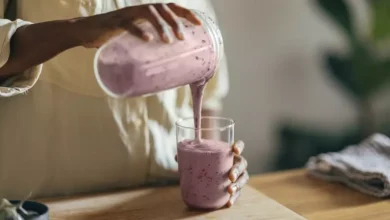Hybrid Training: The New Fitness Trend Combining Cardio and Strength at Home
Hybrid training is taking the fitness world by storm, blending two powerful exercise methods: cardio and strength training. While this concept isn’t entirely new, its popularity has exploded due to the growing demand for efficient, flexible, and results-driven workouts.
What Is Hybrid Training?
At its core, hybrid training is a balanced mix of cardiovascular exercises and resistance or strength training. This method offers the best of both worlds, helping you build endurance while also gaining muscle and toning your body. It allows for endless combinations like running with weightlifting, cycling with calisthenics, or yoga with bodyweight exercises.
The freedom and personalization of hybrid workouts make them appealing to people with different fitness goals. Whether you’re training to lose fat, increase stamina, or build functional strength, hybrid routines offer a strategic path.
Why Hybrid Training Is Gaining Popularity
This trend has caught on quickly thanks to how adaptable it is. People want workouts that can fit into their busy schedules, be done at home, and show real results. Hybrid training checks all these boxes.
Moreover, after the pandemic, there was a shift in how people approached fitness. More individuals began exercising outdoors or at home, mixing different types of movements naturally. This lifestyle shift contributed to the rise of hybrid workouts.
Another reason for its growth is accessibility. Many hybrid exercises require little to no equipment, making them cost-effective. Additionally, the inclusion of functional movements in these routines mimics daily activities, improving overall mobility.
Benefits of Hybrid Training
Hybrid training brings a long list of benefits that go beyond physical appearance. It improves cardiovascular health, boosts muscle strength, supports weight loss, and enhances flexibility. When both cardio and strength work together, the body becomes more efficient overall.
You’ll also benefit from increased calorie burn, even at rest, thanks to the metabolic effects of combining these workout types. Plus, your motivation stays high because the variety helps prevent boredom and keeps workouts exciting.
Furthermore, hybrid workouts improve mental clarity. Studies suggest that combining aerobic and anaerobic activities enhances brain function and mood. This can lead to better focus, less stress, and improved emotional well-being.
Who Can Benefit from Hybrid Training?
Almost everyone can benefit. Beginners enjoy structured variety, while seasoned athletes use hybrid routines to challenge their limits. It’s especially helpful for:
- Busy individuals who want full-body workouts in less time.
- People trying to lose fat while maintaining muscle.
- Runners or cyclists who need strength to prevent injury.
- Weightlifters wanting to improve cardiovascular capacity.
Additionally, older adults can use hybrid training to support bone density, balance, and joint health. When done with proper guidance, it becomes a safe and powerful method to age actively and maintain independence.
Sample Hybrid Routine to Try at Home
Warm-Up (5 minutes)
- Jumping jacks
- Arm circles
- Bodyweight squats
Circuit (Repeat 3x)
- 10 push-ups
- 20 mountain climbers
- 15 air squats
- 30-second plank
Cooldown (5 minutes)
- Light stretching
- Deep breathing
This simple workout combines aerobic elements and resistance training without needing any equipment.
You can also rotate movements to target different muscle groups. For example, on alternating days, include lunges, burpees, or resistance band exercises. This keeps your routine effective and avoids plateaus.
Transition Tips for Beginners
If you’re new to hybrid training, ease into it. Start with two sessions a week, gradually increasing frequency. Alternate cardio days with strength-focused sessions or blend them within a single routine.
Focus on form and recovery. Proper technique prevents injuries and supports better results. Also, ensure rest days are part of your plan to allow muscles to recover.
In addition, track your progress. Keep a fitness journal or use apps to monitor improvements. This can increase your motivation and help you identify what works best for your body.
Nutrition and Recovery
Don’t forget that hybrid training demands energy. Fuel your body with balanced meals rich in protein, healthy fats, and complex carbs. Stay hydrated and get quality sleep to support muscle repair and energy balance.
Stretching and mobility work should be part of your routine too. Foam rolling or yoga can ease tightness and improve long-term performance.
It’s also smart to include supplements if needed, such as omega-3s, magnesium, or protein powder. Consult a nutritionist to tailor your intake based on your fitness goals.
Tools and Equipment You Might Need
While hybrid training can be done without equipment, certain tools can enhance your experience:
- Resistance bands for muscle activation
- Dumbbells or kettlebells for added resistance
- A jump rope for cardio boosts
- Yoga mat for comfort and support
These small additions can expand your exercise variety and intensity without requiring a full gym setup.
Mistakes to Avoid
One common error is overtraining. Because hybrid training is intense, recovery is essential. Overloading your body can lead to fatigue or injury.
Another mistake is ignoring cardio or strength components. To truly benefit, maintain balance between both aspects. It’s also important not to skip warm-ups and cool-downs, which are key to performance and safety.
Finally, don’t compare your journey to others. Progress is personal and should be paced according to your lifestyle and body’s needs.
Final Thoughts
Hybrid training is more than a fitness trend. It’s a lifestyle approach that builds both strength and endurance while saving time. With no strict rules, it’s flexible, adaptable, and perfect for modern life.
It empowers you to customize your fitness journey, adapt your workouts to daily demands, and see consistent results. If you’re looking for a sustainable, efficient way to level up your fitness, hybrid training may be exactly what you need.
Get started today—mix movement with purpose and discover how powerful your body can become.

Hello! My name is Alan Teixeira and I am passionate about helping people live healthier, more balanced lives. From mindful eating to daily habits that promote physical and mental well-being, I believe that small, consistent changes can lead to powerful transformations.
I created this blog to share practical tips, reliable information, and thoughtful insights that can inspire you to take better care of yourself—with balance, mindfulness, and positivity.
If you are looking to improve your health, nourish your body, and build a lighter, more fulfilling routine, you are in the right place. Welcome!





